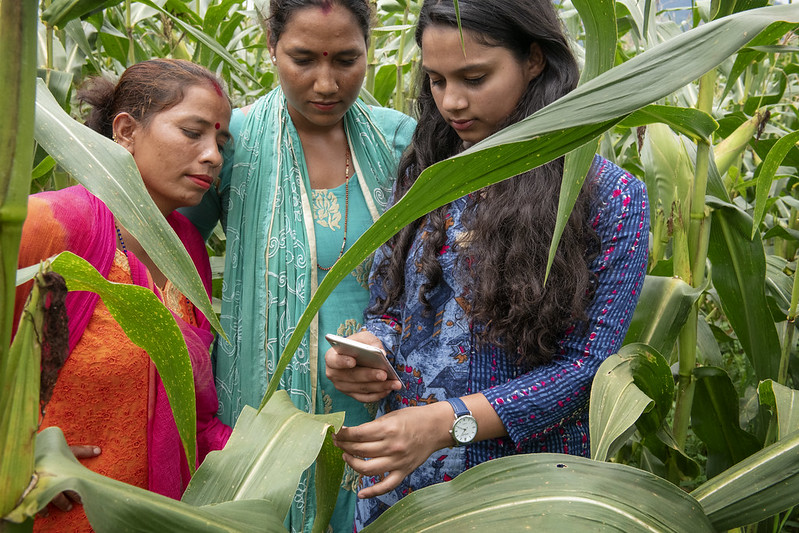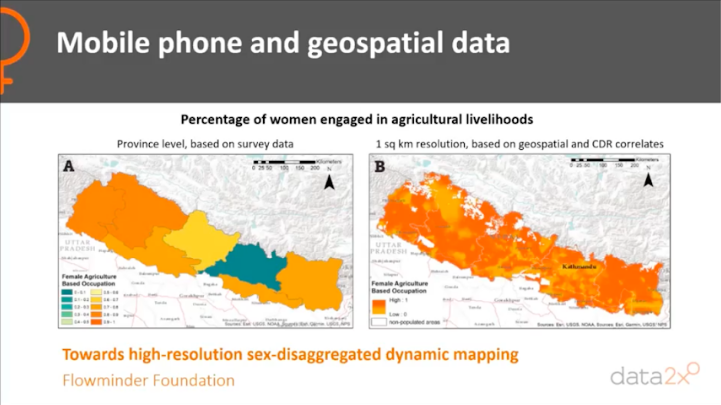Women, Access and Data
This is one of a series of blogs written by our Youth in Data delegates who participated in the 2020 CGIAR Convention on Big Data in Agriculture. The global event was held virtually 19-23 October 2020.
So, where have we been going wrong? For starters, the assumption that all women have access to smartphones and the internet through which modern learning and awareness campaigns are accessed is a myth. The ground reality speaks a different story.
One approach to closing the digital divide between men and women, according to many researchers, is working with those in positions of power and control: fathers, mother-in-laws, employers, clerics, those who often broker women’s access to technology, depending on their background and culture.
Many communities in various regions of the world hold the belief that the internet is immoral for women and interferes with the status quo, which people strongly hold onto, especially in times of insecurity. So it is our responsibility to create compelling educational and communication campaigns in order to provide these communities with the necessary tools in order for women to use these platforms.
“I used to think that social media should not be allowed for women and children. I used to prevent my children from using social media, but now I have learned a lot and allowed my wife and children to use it. I even give them my own handset to use the internet. I would like to call on male parents on the need to allow their children to learn and use the internet. They need to understand that it is a tool for knowledge acquisition. We need to let our wives learn so that they can guide the children.”
Father in the Tech4Family project, an initiative by Revi Sterling’s organization
Mobile Gender Gap
Data is critical for measuring progress and driving action. Without data, the gender gaps and differences are masked, leading to a lack of understanding and misinformation. In addition, it is almost impossible to obtain evidence to form helpful policies and actions. Claire Sibthorpe, Head of Connected Women at GSMA, has been producing the Annual Mobile Gender Gap Reports which highlights key issues women face. Though the mobile internet gender gap remains wide, it has reduced substantially, driven by South Asia:
Source: The Mobile Gender Gap Report 2020, GSMA Intelligence
The gender gap in the GSMA Intelligence report from 2017-2019 refers to how much less likely a woman is to use mobile internet than a man. Mobile internet use is defined as a person having used the internet on a mobile phone at least once in the last three months. Mobile internet users do not have to personally own a mobile phone, so the above figures also include those who used mobile internet on someone else’s phone. This is based on survey results and modelled data for adults aged 18+.
Big Data on Gender
Gender data is a term that was applied to specific communities and was never part of general conversations about development. ‘Gender equality’ was known, ‘data statistics’ was known, but there was never a common understanding between these two concepts. But now international communities are taking these up together and working on the subject of gender data, considering it a major driving resource. A notable contribution and credit for this goes to Emily Pryor’s organization ‘Data2X’ which builds the case and mobilizes action for gender data by strengthening its production and use. For example, one of Data2X initiative’s worked with mobile phone, geospatial, financial, internet, and application data from over eight countries involving 29 researchers to highlight gender gaps and how digital data collected could help fill the black holes.
It’s noteworthy that when projects are designed with the intention of collecting and studying the gender data, instead of having gender as an unintended outcome, it offers unique insights on women and girls.
We need to acknowledge the progress we have made, but understand that we still have a long way to go. Things are better, but still not good enough.
“Without data equality, there is no gender equality.”
*****
Habeebuddin Mir is a Bachelor’s Student at Osmania University in India where he is studying Information Technology and Data Science. Habeebuddin wishes to continue exploring the multiple applications of Big Data in different sectors and hopes that he could be part of the agricultural revolution in order to, not only continue building a resilient world, but help achieve gender equality through FAIR data. This year marks his second time participating from the Youth in Data Bootcamp and he believes that the workshops offered by the Big Data Platform in Agriculture have helped him gain knowledge in the sector, understand where his Data Science skills can be used in order to achieve a more equitable world, and use those gains to contribute to organizations like CGIAR.
At the CGIAR Platform for Big Data in Agriculture, we believe that if we are to achieve a sustainable food future, it is vital that today’s youth are able to access the agricultural research sector and that pathways are provided for them to contribute to the transformation needed.
As a part of that commitment, the BIG DATA Platform hosts an annual Youth in Data workshop to engage participants on important themes around digital agriculture and big data approaches to agricultural development. Click here for more information about this workshop and our other youth initiatives.
Featured photo: C. De Bode/CGIAR.
November 12, 2020
Habeebuddin Mir
2020 Youth in Data Delegate
CGIAR Platform for Big Data in Agriculture
Hyderabad India
8 - 8Shares
Latest news
8 - 8Shares







